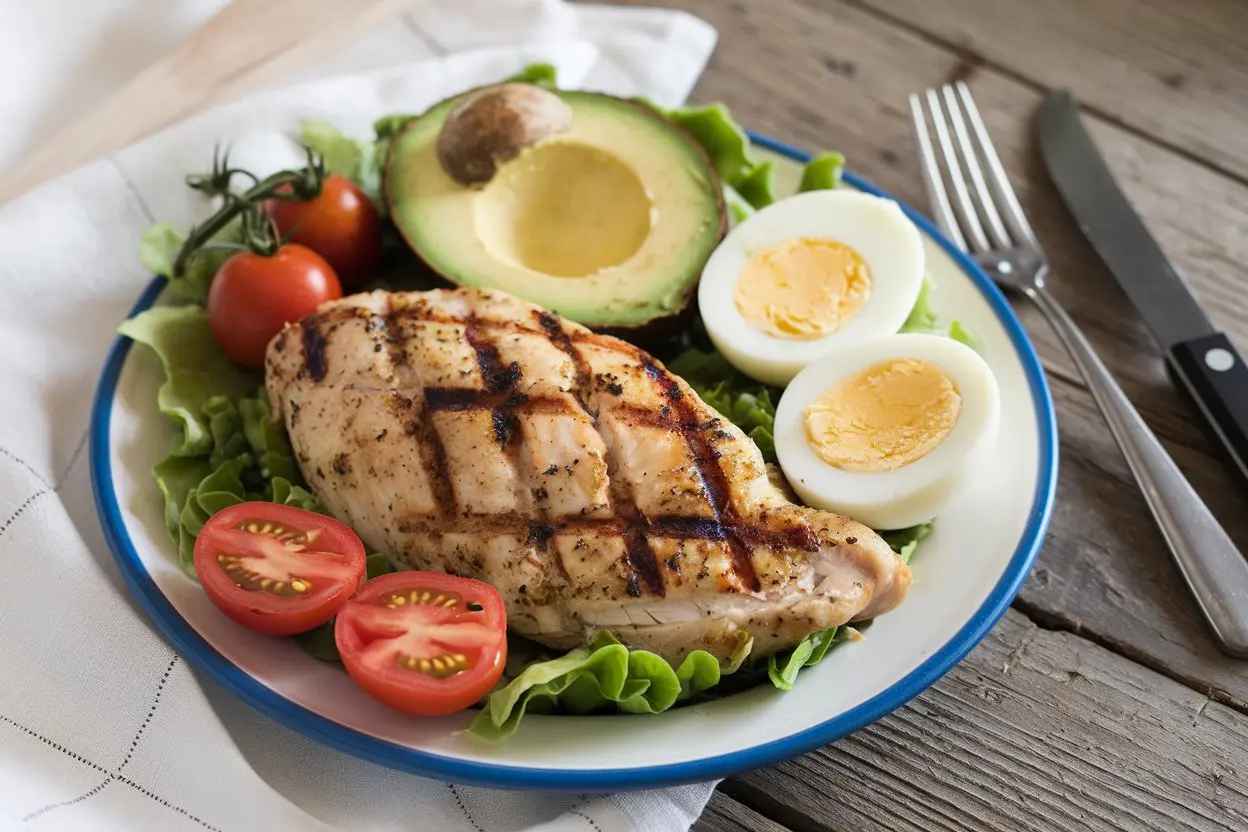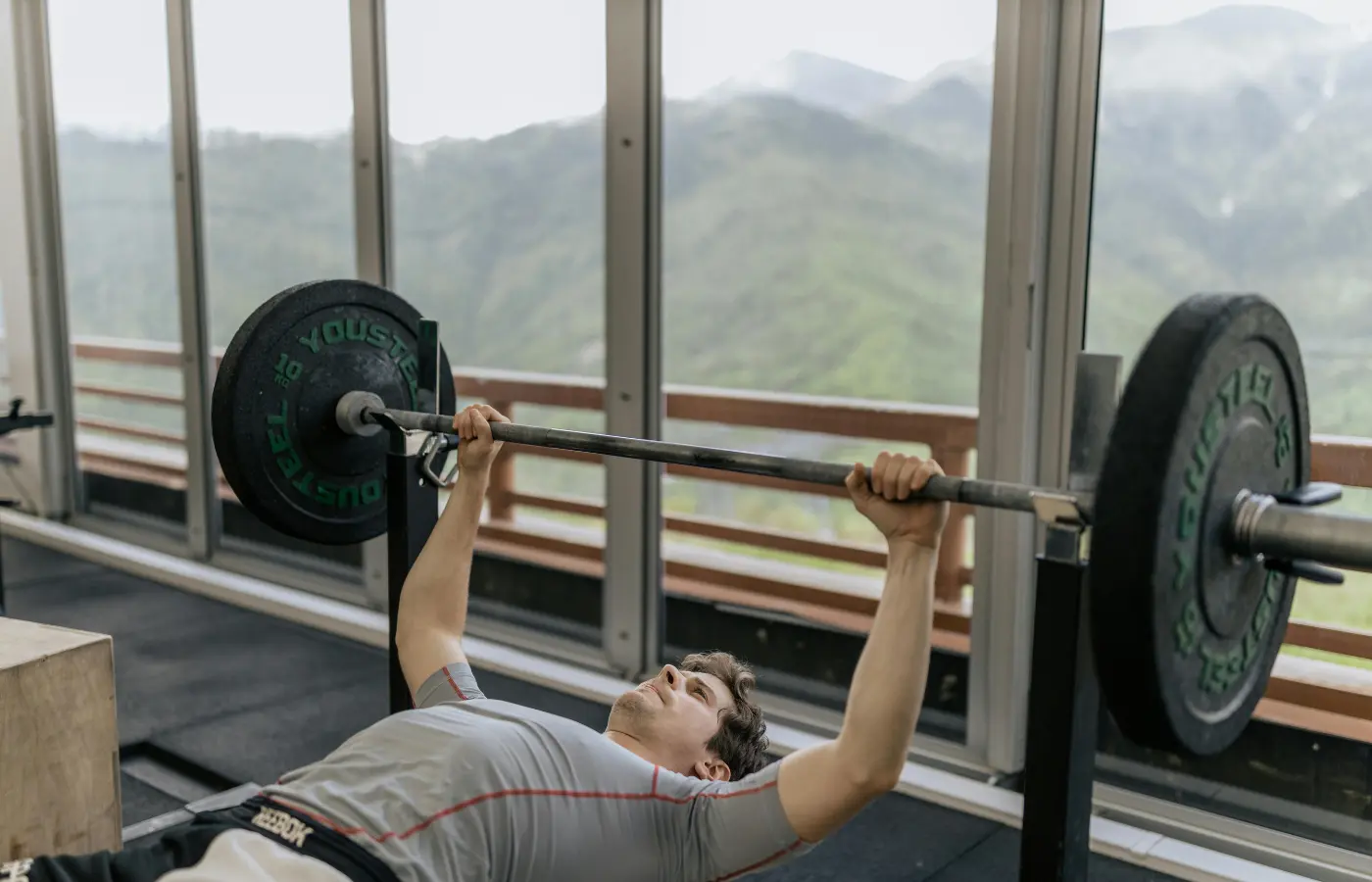Dry weight training is a common practice in bodybuilding, following weight gain or for athletes competing in weight categories. The needs are different, but the principle is the same, aiming for a change in the body.
Rather like a classic diet, the aim is to reduce fat while preserving as much muscle as possible. It's a far cry from reducing excess weight. Water, diet and exercise are at the heart of the dry weight program. The aim is to dose meals and the quantity of lipids, carbohydrates and proteins to optimize calories, but also to practice cardio and strengthening.
Too rapid a caloric deficit leads to muscle wasting. Too slow, and results are delayed. So how much weight should you lose per week to achieve better body composition and avoid muscle loss? Between dietary strategy and training optimization, we look at how to achieve a successful, effective and long-lasting lean period.
What is ideal weight loss in the dry phase?
What is a dry run in bodybuilding?
The definition of a muscle dryout is based on the notion of body composition. The principle is not to lose weight (and, technically, not to lose weight either), but to achieve a better balance between fat loss, known as fat mass, and muscle, known as lean mass. Drying is therefore different from a weight-loss diet. Drying involves a reasonable reduction in calorie intake to optimize body weight without muscle loss.
There are 2 reasons why sports enthusiasts need to dry out:
- to get a drier body for bodybuilding competitions or for aesthetic reasons;
- for weight category sports for performance purposes. If you're under 80 kilos, you might as well be 79.9 with maximum muscle!

How much weight can you lose without damaging your muscle mass?
The recommended weight loss for a weight-loss program is around 2 kilos per month maximum, as for a classic slimming diet. It's important to point out, however, that for certain profiles, a few hundred grams of weight loss may be enough to give a drier, more defined appearance, if the loss has been well targeted at fat.
To calculate the precise number to be eliminated, we convert the percentage of body fat to be lost into kilos. For example, a 60 kg woman wishing to lose 5% body fat will need to lose 3 kilos, i.e. a drying period of 1.5 to 2 months.
Along with your body fat percentage, you can also calculate your lean mass index (LMI ) to monitor and preserve your muscle mass.
Strict calorie restriction is not without health risks. For one thing, too abrupt a loss of weight can lead to a loss of muscle in the dry phase, which is counter-productive, but it can also lead to hormonal risks and increased fatigue.
The key to a successful muscle-building workout lies in one word: progressiveness.
Weight loss simulator / week
Estimated weight loss curve
One kilogram of body fat is equivalent to around 7700 calories.
The first two weeks generally see a greater drop in weight due to the loss of water (glycogen) rather than just fat.
Too great a deficit (>1000 cal/day) can lead to loss of muscle mass and slow metabolism.
What will improve dry weight loss?
Basic metabolism and energy expenditure
Total daily energy expenditure represents the energy used to maintain physiological functions and move around¹. It is made up of 3 components, all of which play a part in muscle leaning:
- basal metabolism, our energy expenditure at rest
- diet-induced thermogenesis
- energy burned by physical and non-physicalactivity
Muscle mass partly determines basal metabolic rate². If muscle mass increases, resting energy consumption rises, and vice versa, as skeletal muscle amplifies what is known as thermogenesis, the body's heat production.
This thermogenesis is also linked to so-called non-physical activities, known as NEAT ( Non Exercise Activity Thermogenesis). This component depends on environmental and individual factors, as it involves leisure activities, sitting or standing, climbing stairs, walking, singing, housework and any other form of occupation¹. And increasing thermogenesis is also a way of controlling body weight.
Daily energy expenditure = basic metabolism + thermogenesis + activities (physical + NEAT)
Controlling energy expenditure is one of the key factors for optimal weight loss, along with a second important parameter: diet.

The right diet for a calorie deficit healthy
The caloric deficit is spread out over time. It is progressive, with a maximum of 300 to 500 calories less per day. The overall aim is to consume the minimum number of calories per day with the maximum number of nutrients.
The diet plan adapted to a dry period also respects certain principles with regard to the distribution of these macronutrients:
- maintain protein levels (the benchmark is 1.6 to 2 grams per kilogram of body weight)
- consume lipids in the form ofessential fatty acids (olive oil, rapeseed oil, oily fish, etc.).
- Reduce carbohydrate-rich foods, with the possibility, in some cases, of achieving what is known as a carbohydrate rebound.
This dietary intake, when coupled with resistance training, can alter body composition. For example, one study³ shows that a 12-week program leads to gains in lean body mass, muscle size and strength, and that protein intake influences lean body mass. Of the three groups that consumed nutrients post-program, the group that consumed whey protein had a greater reduction in total and abdominal fat (compared to the group that consumed carbohydrates).
The study therefore concludes that whey protein is an effective means of stimulating abdominal fat loss, highlighting the adaptations in lean body mass in response to resistance training.
Hydration and sleep during a dry spell
Just aswater is a factor in sporting performance, sleep is an essential need for the body. Its absence is known to be bad for health, as it alters eating behavior, glucose regulation, blood pressure, cognitive processes and hormonal⁴ systems.
Among these, the increase in cortisol combined with the decrease in testosterone and a growth factor, linked to a sleep debt, favours protein degradation. This mechanism contributes to a reduction in muscle mass and hampers post-exercise recovery, leading to injury.
Mistakes to avoid and our tips for a successful dryer
Beware of these common dry-cleaning mistakes
The most common errors include :
- an excessive rate of caloric deficit, with the risk of losing muscle as a result
- a poor ratio between strength training andendurance sessions , to be adapted to dry conditions
- a drastic change indaily calorie intake, with a yo-yo effect between rapid mass gain and weight loss
When we practice a sport coupled with a nutritional program, we first empty our glycogen stores before attacking our adipose reserves². If this is too restrictive in practice, the body will resist this loss of energy by adopting an economy strategy. To do this, it will reduce its basal metabolic rate and thermogenesis, which is counterproductive to good weight loss.
Successful weight loss without sacrificing muscles
Consuming sufficient protein is the first element in losing fat without losing muscle. A daily dose of high-quality protein of 1.6 to 2 grams per kilo of weight, is a simple and safe principle to respect⁵. While slightly exceeding the dose has no direct negative impact, underestimating it can be a hindrance to optimizing the desired anabolic response.
Dietary recommendations depend on the individual, whether or not they are competitive, and on their objectives. Support from a coach or sports nutrition professional is one way of achieving the desired results.
The definition of a successful tummy drydown also involves sports sessions. While cardio training is not forbidden, it is recommended to intensify resistance training and combine it with moderateendurance efforts.
Finally, remember that weight loss is not linear over time. Weight loss can go fast, then stagnate. The important thing is to adapt your meals and exercise sessions according to your body's response to weight loss.

Self-regulation in dry weather
Listening to the body and biofeedbacks
Listening to your needs is one of the keys to success.
Measuring your progress on the scale is essential, but so is listening to your feelings of fatigue, strength and vitality during your sessions, so that you can regulate the volume of your exercise and your meals.
Adopting dietary flexibility and allowing yourself to enjoy a meal, while avoiding cheat meals, will be more effective than forcing yourself to eat only the foods you have planned.
The aim is to last over the long term, so how do you avoid frustration and demotivation?
Our tips for limiting motivation lapses
There's nothing worse than losing motivation during a dry run. So here are 8 extra morale-boosting tips:
- break down your goal into achievable sub-goals
- focus on each sub-goal achieved rather than on those still to be achieved
- keep your carbohydrate intake to a minimum to preserve energy
- increase your rest and recovery times during calorie restriction
- allow yourself a dietary break now and then
- photograph the body changes you observe once a month
- find a training partner to motivate you
- get support from a specialized, competent coach
Research shows that a progressive approach not only promotes the preservation of muscle mass, but also psychological resilience and better long-term adherence, which helps maintain performance⁶.
Conclusion
As you can see, the aim of a weight loss program is not to lose weight. The aim is to reduce body fat while preserving muscle. Drying out too quickly and radically can lead to fat being stored as soon as calorie intake is normal, or to the protein system being degraded, which is counter-productive.
A well-managed weight loss program is therefore progressive to ensure that it lasts, but it does not last a whole year. The ideal is toindividualize the program to see how the caloric deficit can be broken down without exceeding a loss of 2 kg per month. It's all about finding the right balance between eating the right fruits, vegetables and foods and doing the right amount of cardio and weight training , without impacting performance.
A slight caloric deficit, well-prepared physical activity and quality sleep are the 3 factors for a successful dry weight loss. If in doubt, a specialist coach can help you structure your eating and exercise plan to ensure you progress correctly and avoid common mistakes. Finally, bear in mind that weight loss is not a sprint, but a process that takes time. So adapt your diet to your feelings and progress, for lasting results.














